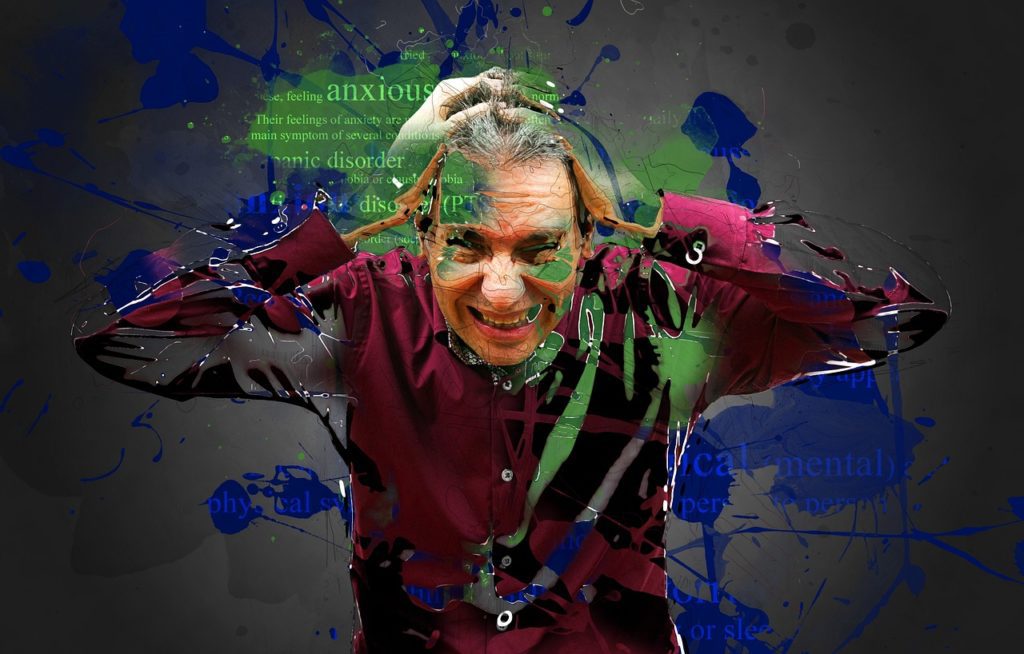Helping Others Through EMDR Therapy with Rebecca Kase
If you were to look at the world today, it is full of mental and emotional issues — everything from depression, anxiety, PTSD, and more. There are many kinds of medications that are being thrown out there to help people cope, but what if there was another solution? I had the opportunity to put together this interview with Rebecca Kase, who specializes in EMDR therapy.
Rebecca provided the information below to help the readers of our website understand precisely what EMDR therapy is and how you can utilize it if you suffer from any type of mental or emotional issues.
Disclaimer: This article is for informational purposes only and is not meant to treat or diagnose any condition. It is recommended to seek professional help if you feel you suffer from any type of mental or emotional condition.

With all that being said, let’s dive into what Rebecca Kase has shared with us as it pertains to EMDR therapy. I hope you enjoy what she has to say!
Eye Movement Desensitization and Reprocessing (EMDR) therapy is a treatment for psychological and emotional issues that have been scientifically tested and shown to be extremely effective. It can help with a variety of conditions, including PTSD, anxiety, and depression. I’ve used EMDR therapy to treat patients with many types of trauma, including sexual abuse and assault, car accidents, military combat, domestic violence, performance anxiety, panic, anxiety, addictions, and more.
Related Article: Frequency Healing — The Zen Way to a Healthy Lifestyle
EMDR therapy is based on the idea that traumatic or distressing memories can become stuck in our brains and interfere with our ability to function normally. The goal of EMDR therapy is to help people process difficult memories, reducing the negative emotions associated with them so they don’t cause continued distress.
What is EMDR?
In the preliminary phases of EMDR therapy, the therapist and client work together to identify specific memories that appear to produce symptoms and distress. Those memories are then targeted with a customized protocol that activates the feelings and sensations related to the memory.

During EMDR therapy, a therapist will ask you to think about these stressful images or thoughts. They will also ask you to focus on the negative emotions your memories bring up. Unlike other therapies, however, EMDR therapy doesn’t require patients to construct a detailed narrative of the trauma or experiences — the person can choose to disclose only the details they want. This can make EMDR therapy especially attractive for veterans and active-duty personnel, first responders, or clients involved in the legal system.
As the client thinks about the memory and notices all the feelings and sensations, the therapist adds stimuli to both sides of the body, which is called “bilateral stimulation.” This may take the form of directing the patient’s eye movements from side to side, sending sounds into one ear and then the other, or tapping the patient on the right and left shoulders, knees, or other parts of the body. The idea is to use sensory input that traverses the body to activate both sides of the brain.
How Does EMDR Therapy Work?
While bilateral stimulation may sound strange, it affects some important neurophysiological processes that help integrate and resolve distressing memories.
First, bilateral stimulation has a calming effect on the nervous system. As the client thinks about a disturbing memory, the application of bilateral stimulation typically produces changes to the emotionality of the memory and reduces its intensity. These improvements often happen quickly, sometimes as fast as within a few minutes, one session, or over multiple sessions.
Second, bilateral stimulation serves as a distraction from the memory. Thinking about a disturbing experience while also trying to focus on the bilateral stimulation taxes your attention. Research shows that these repeated interruptions can “break” the memory, reducing its charge.
Related Article: Are the Benefits of Walk and Talk Therapy Worth Trying?
Finally, bilateral stimulation also stimulates the orienting response, which is the process your nervous system uses to assess safety and risk. Bilateral stimulation encourages your brain to reassess the experience, allowing the nervous system to recognize that the disturbing events are over and you survived.
All these processes happen at once, which means a lot occurs in your nervous system during EMDR therapy sessions. By undergoing this course of treatment, the brain can process and reprocess information in a more effective way. As a result, difficult memories won’t cause as much stress in your daily life.
How Effective is EMDR Therapy?
Unlike other therapies, the positive effects of EMDR therapy last long after treatment ends. Research shows that symptoms improve and stay improved for most patients. Thousands of therapists around the world use it, and over 7 million people have benefited from it.

I’ve been practicing EMDR since 2006 and have seen no therapy as practical, powerful, or long-lasting as EMDR therapy. For some, EMDR therapy offers a quicker path to healing and reducing symptoms than other therapies. EMDR therapy also does not require homework, which means fewer people end up dropping out of this form of therapy.
Related Article: What is Sound Healing and Does It Work?
One client who will always stick with me had been in a terrible accident in which she lost both her legs, and her friend was killed. My patient struggled with chronic pain and PTSD, as well as grief and loss. She felt hopeless and powerless as an amputee, felt her life was over, and had started abusing her pain medications and using marijuana to numb herself to this.

After about six months of EMDR therapy, this client’s PTSD symptoms cleared up, her use of pain medications significantly reduced, and she also reduced her marijuana use. At the end of treatment, she informed me that EMDR therapy inspired and moved her so much that she even applied to graduate school and was accepted into a Master’s program for counseling. She wanted to specialize in trauma, substance use, and chronic pain based on her experiences and healing.
Misconceptions About EMDR Therapy
As an evidence-based therapy, EMDR therapy is no longer considered controversial. Many leading psychological associations and health organizations, such as the World Health Organization and the American Psychological Association, recognize it as a first-line treatment for PTSD.
However, some people think that EMDR therapy is a magic bullet and that anyone can benefit from it. This isn’t true — EMDR therapy is not a good fit for every client, particularly those who are highly unstable or exhibit high-risk symptoms. Those who have unresolved trauma or highly stressful experiences that continue to impact them may benefit from this treatment, depending on their unique factors, history, and therapy goals.
While EMDR therapy is good for treating trauma and symptoms produced from overwhelmingly stressful experiences, sessions can be intense. Patients need to be motivated and able to tolerate feeling distressed to benefit from this therapy. Those who are avoidant, looking for a magic cure, or are afraid to feel their feelings and body sensations are not good candidates for EMDR therapy. All therapies ask you to feel distressing feelings and sensations, and EMDR therapy is no different. You have to feel to heal.
Getting Started with EMDR
While EMDR therapy might not be the right fit for everyone, it’s a powerful option for many. It’s based in science and works quickly. EMDR therapy changes people’s lives for the better, so if you’re a trauma therapist or someone in search of healing, consider exploring this exciting therapy.
If you want to learn even more, Rebecca Kase is the author of “Polyvagal-Informed EMDR: A Neuro-Informed Approach to Healing” where she goes in even more depth on how you can use EMDR therapy.

— Rebecca Kase, founder and owner of EMDR training program Kase & CO, is the author of “Polyvagal-Informed EMDR: A Neuro-Informed Approach to Healing” (W.W. Norton, 2023). She is a licensed clinical social worker and yoga instructor in Gig Harbor, WA.


*Disclosure: This article may contain affiliate links or ads, which means we earn a small commission at no extra cost to you if you make a purchase through these links. These commissions help support the operation and maintenance of our website, allowing us to continue producing free valuable content. Your support is genuinely appreciated, whether you choose to use our links or not. Thank you for being a part of our community and enjoying our content.
PLEASE CONSIDER SHARING THIS ON YOUR SOCIAL MEDIA TO HELP OTHERS LEARN MORE ABOUT THIS TOPIC.





